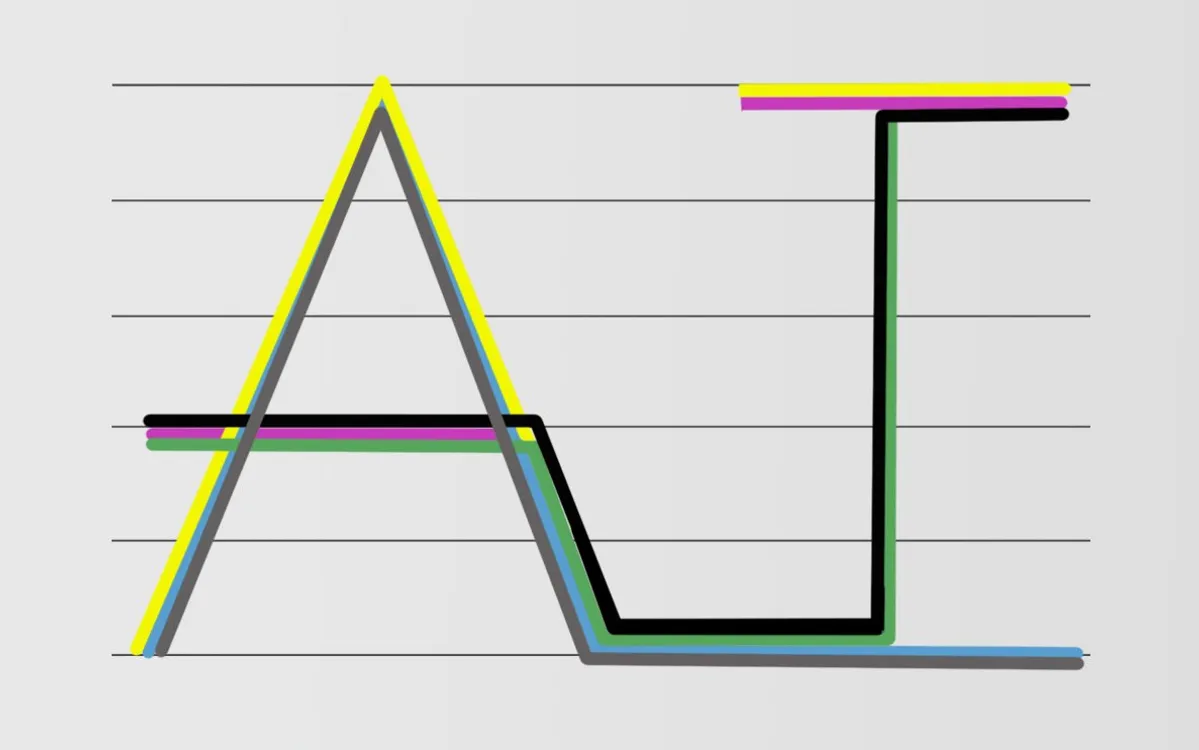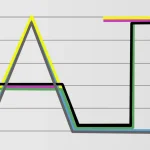
CENTRAL BANK DIGITAL CURRENCY AS A STORE OF VALUE AND BANKS

The bulk of cash is held for store-of-value purposes, with such holdings sharply increasing in times of high economic uncertainty, when only a fraction of the population is holding cash as a store of value. We developed a Diamond-Dybvig model (1983)1 with public money as a store of value and heterogeneous beliefs about bank stability accounting for the evidence. Our model simulations suggest that, despite inducing partial bank disintermediation, the introduction of a central bank digital currency (CBDC) as a store of value generally increases social welfare by lowering the storage costs of public money. The retail CBDC should mainly be used as a means of payment rather than as an instrument for financial investments; thus, any potentially negative consequences for the financial sector should be avoided (Panetta, 20222). Our study, Muñoz and Soons, 20233, is consistent with these views and points out that a CBDC can increase welfare through its store-of-value functionality.
≈≈≈
In recent years, the use of digital payment methods for transactions has been increasing at the expense of cash, a pattern that has become more pronounced since the outbreak of the COVID-19 crisis (see, for example, Auer et al., 20204). In response to this shift, central banks started investigating the benefits and implications of issuing CBDCs. The ultimate goal of a CBDC is to ensure that individuals operating in an increasingly digitalised economy continue to have access to public money as a means of payment.
However, there are concerns that if they are also widely used as stores of value, CBDCs may disintermediate banks (see European Central Bank [ECB], 20205; Panetta and Bindseil, 20206; Adalid et al., 20227). Given the perceived high degree of substitutability between CBDCs and bank deposits (Burlon et al., 20238), there are good grounds to support this concern.
The aim of our study, Muñoz and Soons, 20239, was to evaluate how the introduction of a CBDC as a store of value affects bank intermediation, investments and welfare by altering consumers’ portfolio choices between public money and private money within a model that accounts for the empirical evidence regarding cash holdings. For this purpose, we developed a model à la Diamond and Dybvig based on public money and heterogeneous beliefs about bank stability. Our simulations have shown a wide range of cases in which, despite the partial disintermediation of banks, introducing a CBDC that serves as a superior public-storage technology increases social welfare. With its focus on the store-of-value functionality of public money, our work sets itself apart from the literature that focuses on the benefits of the CBDC as a means of payment.
Motivating evidence
Our analysis was motivated by three key empirical findings:
- The bulk of cash is held for store-of-value purposes. Despite the fact that the use of cash as a means of payment has been decreasing in recent years, cash holdings as a percentage of gross domestic product (GDP) have continued to increase (Goodhart and Ashworth, 202010).
- Cash holdings sharply increase in times of high economic uncertainty. Various empirical studies document the strong links between demand for cash and economic uncertainty, perceived bank stability and the state of the economy (see Jobst and Stix, 201711).
- Only a proportion of the population holds cash as a store of value. In the particular case of the euro area, see ECB, 202012 and ECB, 202213.
Figure 1 illustrates these empirical observations in the case of the euro area. Panel (a) reports euro-denominated aggregate cash holdings as a percentage of GDP for the period 2003-21. Cash holdings increased over the entire time horizon. Panel (b) displays the estimated components of total cash holdings used for transaction purposes (dashed line) and those used as stores of value (solid line). The steady increase in aggregate cash holdings over time is mainly attributed to the patterns of the estimated cash holdings as stores of value. Panel (c) plots the cyclical component of euro-denominated aggregate cash holdings, and panel (d) reports the share of survey respondents who kept extra cash on hand for store-of-value purposes in 2016, 2019 and 2021. This suggests that not only aggregate cash holdings but also the share of store-of-value cash holders have increased over time and jumped in times of high economic uncertainty.

Notes: Panels (a), (b) and (c) refer to cash holdings defined as the values of euro-denominated banknotes in net circulation as a percentage of GDP with an annual frequency. Panel (d) reports the share of individuals who held euro-denominated cash for store-of-value purposes—in the euro area and each of the 19 euro area countries—in 2016, 2019 and 2021, according to survey results published by the European Central Bank (ECB) in 2017, 2020 and 2022, respectively. Variables represented in panels (a), (b) and (d) are expressed in percentage points. The graph plotted in panel (c) is expressed in percentage deviations from the HP (Hodrick–Prescott filter) trend with a standard smoothing parameter of 100. We decomposed euro-denominated cash holdings into these two estimated components by applying the seasonal method, as in Zamora-Pérez, 202114. See Muñoz and Soons, 202315 for further details. Data and sources: ECB, Esselink and Hernández, 201716 and Muñoz and Soons, 2023.
A Diamond-Dybvig model with cash as a store of value
Against this background, we developed a version of the Diamond and Dybvig canonical bank-run model augmented with cash, which we named the baseline model. As in Cooper and Ross, 199817 and Ennis and Keister, 200318, the probability of bank-run equilibrium is exogenously determined according to an equilibrium selection rule. Such exogenous probability captures bank stability and the state of the economy, and it is assumed to be public information. Importantly, we interpreted the short-term assets in which banks invest as “reserves” (in other words, digital public money that can be directly accessed only by banks). To capture the technological superiority of reserves when compared to cash (due to the digital nature of the former), we normalised to zero any storage costs to which the former might be subject, whereas we assumed that cash storage costs are strictly positive.
However, we have shown that this simple extension of the Diamond-Dybvig model does not account for the above-described evidence on cash holdings. On the contrary, in this setup, there is no demand for cash as a store of value in equilibrium, and it is, thus, not suited to studying CBDCs. Why? Because the bank can always offer a run-proof banking contract—by fully investing consumers’ endowments in reserves—that is preferred to cash (similar to narrow banking). This preference is due to the digital nature of reserves. Thus, in the baseline model, there is no role for public money as a store of value, as consumers always prefer placing their endowments in deposit contracts, regardless of the (known) probabilities of bank runs. This finding follows from our assumption that, as in the case of consumers, central banks face adverse selection problems that impede them from investing in long-term assets (i.e., lending to firms). By making this empirically relevant assumption (i.e., asymmetric information faced by central banks and their related risk-management frameworks), our analysis has ruled out the possibility of having a digital central bank deposit monopoly (Harald Uhlig et al., 202019).
The role of heterogeneous beliefs about bank stability
Consider an extension of the baseline model in which the exogenous probability of a bank run is no longer public information. In this environment, consumers have heterogeneous beliefs about such a probability (i.e., bank stability). We refer to this setup as The Model. Provided that the bank-deposit contract is run-prone, we have shown that those consumers who are sufficiently pessimistic about bank stability opt to place their endowments in cash rather than bank deposits. The bank offers a single deposit contract to all depositors by maximising the expected utility of the average beliefs of depositors. As illustrated in Figure 2, the aggregate demand for cash as a store of value is given by the sum of all the individual cash holdings of consumers whose individual beliefs, qi, is to the right of threshold q ̃.

Note: This figure illustrates the cash demand for a particular beta distribution of beliefs. Source: Muñoz and Soons, 2023.
In The Model, the dispersion in individual beliefs captures aggregate economic uncertainty. We show that an exogenous increase in belief dispersion (i.e., increased disagreement σ) expands aggregate cash holdings as the mass of individuals in the tails of the distribution rises (Figure 3). That is, The Model accounts for the above-outlined empirical facts.

Note: The figure illustrates cash demand under a beta distribution of beliefs that assumes more or less belief dispersion. Source: Muñoz and Soons, 2023.
The CBDC as a superior public-storage technology
We introduced into The Model an unremunerated CBDC that is technologically superior to cash and into which consumers can directly place their endowments. As in the case of bank reserves, the technological superiority of the CBDC, due to its digital nature, is captured by normalising the CBDC storage costs to zero. For simplicity, we assumed that introducing a CBDC affects neither the probability of a bank run nor individuals’ beliefs about such a probability.
The issuance of a CBDC reduces bank intermediation and productive investments by altering portfolio choices based on individual beliefs about bank stability. A CBDC lowers the storage costs of holding public money and, thus, expands the set of consumers who prefer to hold public money. All cash holders switch to CBDCs, and some depositors also opt to switch to CBDCs based on their beliefs. Interestingly, as the demand for public money increases, the average depositor is more optimistic about bank stability. Consequently, the bank optimally rebalances its portfolio toward a larger share of long-term lending as its depositor base is less concerned about its liquidation value in the event of a bank run. Thus, while in absolute terms, the issuance of a CBDC as a store of value leads to a decline in bank deposits and lending, in relative terms, it translates into increased maturity transformation.
We studied the welfare implications of issuing a CBDC as a store of value in The Model. Performing a welfare analysis in such a heterogeneous-agent environment is challenging. Does individual welfare depend on the objective probability of a bank run or subjective individual beliefs? Which distributions do individual beliefs about bank stability follow? Does the social planner have all the information needed to maximise the relevant measures of social welfare? In the absence of a welfare criterion that is widely accepted, we considered a number of policy-relevant cases. In particular, our welfare analysis (i) considers the entire range of possible values for the actual probability of a bank run and individual beliefs about such probability; (ii) allows for different distributions of individual beliefs; (iii) differentiates between the case in which individual welfare depends on the probability of a bank run and the case in which it depends on individual beliefs about such probability; and (iv) distinguishes between the case in which the social planner has all the necessary information and knows the relevant measure of social welfare and the case in which she has to estimate the measure.
Figure 4 displays simulated individual welfare effects of a CBDC by three consumer types (classified according to individual beliefs) for the benchmark case in which individual welfare depends on the probability of a bank run (rather than on individual beliefs) and the social planner understands such a probability. The figure shows that, even in the simplest case, the adoption of a CBDC has heterogeneous welfare consequences across the population, with such consequences depending on actual bank stability qtrue.

Note: The figure displays simulated individual welfare under Case 1 in The Model with and without a CBDC for each type of consumer and the entire range of values for the objective probability of a bank run. Source: Muñoz and Soons, 2023.
We have summarised the main findings of our welfare analysis as follows. First, cash holders always benefit from lower storage costs by fully switching to CBDCs. Second, those consumers who switch from deposits to CBDCs based on their beliefs also benefit, unless their individual welfare depends on the true probability of a bank run and such probability is sufficiently low (thus, their beliefs about bank stability are too pessimistic). Third, in general, depositors are worse off after the introduction of a CBDC as a store of value, although the most optimistic may benefit if their individual welfare depends on their own beliefs rather than on their banks’ actual stability. After aggregating these heterogeneous welfare effects and considering various welfare criteria (see Brunnermeier et al., 201420), we concluded that generally, the introduction of an unremunerated CBDC as a store of value improves social welfare unless a set of specific conditions holds simultaneously.
Concluding remarks
The introduction of a CBDC as a store of value in The Model induced a certain degree of bank disintermediation as some pre-existent depositors opted to switch to CBDCs based on their individual beliefs about their banks’ stability and views that holding CBDCs was less costly than storing cash. Our analysis presents two interesting corollaries to this result. First, due to the optimal rebalancing response of banks to a shift in their depositors’ beliefs, lending falls less than one-for-one against deposit and relative maturity-transformation increases. Second, despite this partial bank-disintermediation effect, introducing a CBDC as a store of value increases social welfare in a wide range of relevant cases due to the powerful benefits of increasing the efficiency of storing public money in an environment characterised by disagreements about banks’ stability.
The views expressed in this article are those of the authors and do not necessarily reflect the views of the European Central Bank (ECB), the De Nederlandsche Bank (DNB), the Eurosystem or the Spanish Treasury.
References
1 Journal of Political Economy: “Bank Runs, Deposit Insurance, and Liquidity,” Douglas W. Diamond and Philip H. Dybvig, June 1983, Volume 91, Number 3, Pages 401–419.
2 European Central Bank (ECB)/Eurosystem: “The digital euro and the evolution of the financial system: Introductory statement by Fabio Panetta, Member of the Executive Board of the ECB, at the Committee on Economic and Monetary Affairs of the European Parliament,” June 15, 2022, Brussels.
3 European Central Bank (ECB)/Eurosystem: “Public money as a store of value, heterogeneous beliefs, and banks: implications of CBDC,” Manuel A. Muñoz and Oscar Soons, March 2023, Working Paper Series Number 2801.
4 Bank for International Settlements (BIS): “Covid-19, cash, and the future of payments,” Raphael Auer, Giulio Cornelli and Jon Frost, April 3, 2020, BIS Bulletin Number 3.
5 European Central Bank (ECB)/Eurosystem: “Report on a digital euro,” October 2, 2020.
6 VoxEU/Centre for Economic Policy Research (CEPR): “Central bank digital currency remuneration in a world with low or negative nominal interest rates,” Fabio Panetta and Ulrich Bindseil, October 5, 2020.
7 European Central Bank (ECB)/Eurosystem: “Central bank digital currency and bank intermediation: Exploring different approaches for assessing the effects of a digital euro on euro area banks,” Ramón Adalid, Álvaro Álvarez-Blázquez, Katrin Assenmacher, Lorenzo Burlon, Maria Dimou, Carolina López-Quiles, Natalia Martín Fuentes, Barbara Meller, Manuel A. Muñoz, Petya Radulova, Costanza Rodriguez d’Acri, Tamarah Shakir, Gabriela Šílová, Oscar Soons and Alexia Ventula Veghazy, May 2022, Occasional Paper Series, Number 293.
8 American Economic Journal: Macroeconomics: “The Optimal Quantity of CBDC in a Bank-Based Economy,” Lorenzo Burlon, Manuel A. Muñoz and Frank Smets, forthcoming 2023.
9 European Central Bank (ECB)/Eurosystem: “Public money as a store of value, heterogeneous beliefs, and banks: implications of CBDC,” Manuel A. Muñoz and Oscar Soons, March 2023, Working Paper Series Number 2801.
10 VoxEU/Centre for Economic Policy Research (CEPR): “Coronavirus panic fuels a surge in cash demand,” Charles Goodhart and Jonathan Ashworth, July 17, 2020.
11 SUERF: “Is cash back? Assessing the recent increase in cash demand,” Clemens Jobst and Helmut Stix, October 2017, SUERF Policy Note, Issue 19.
12 European Central Bank (ECB)/Eurosystem: “Study on the payment attitudes of consumers in the euro area (SPACE),” 2020.
13 European Central Bank (ECB)/Eurosystem: “Study on the payment attitudes of consumers in the euro area (SPACE),” 2022.
14 European Central Bank (ECB)/Eurosystem: “The paradox of banknotes: Understanding the demand for cash beyond transactional use,” Alejandro Zamora-Pérez, 2021, ECB Economic Bulletin, Issue 2/2021.
15 European Central Bank (ECB)/Eurosystem: “Public money as a store of value, heterogeneous beliefs, and banks: implications of CBDC,” Manuel A. Muñoz and Oscar Soons, March 2023, Working Paper Series Number 2801.
16 European Central Bank (ECB)/Eurosystem: “The use of cash by households in the euro area,” Henk Esselink and Lola Hernández, November 2017, Occasional Paper Series, Number 201.
17 Journal of Monetary Economics: “Bank runs: Liquidity costs and investment distortions,” Russell Cooper and Thomas W. Ross, 1998, Volume 41, Issue 1, Pages 27–38.
18 Journal of Economic Theory: “Economic growth, liquidity, and bank runs,” Huberto M. Ennis and Todd Keister, April 1, 2003, Volume 109, Issue 2, Pages 220–245.
19 VoxEU/Centre for Economic Policy Research (CEPR): “Central bank digital currency: Central banking for all,” Harald Uhlig, Daniel Sanches, Linda Schilling and Jesús Fernández-Villaverde, April 25, 2020.
20 The Quarterly Journal of Economics: “A Welfare Criterion For Models With Distorted Beliefs,” Markus K. Brunnermeier, Alp Simsek and Wei Xiong, November 2014, Oxford University Press, Volume 129, Issue 4, Pages 1753–1797.
Retrieved from: https://internationalbanker.com/banking/central-bank-digital-currency-as-a-store-of-value-and-banks/
(02/05/2024)
- keyword : Banking, CBDC, Digital Payments, European Central Bank
Recommended news
-
15 Graphs That Explain the State of AI in 2024
May 16, 2024 -
Investors are growing increasingly weary of AI
May 16, 2024
Recommended news


15 Graphs That Explain the State of AI in 2024






